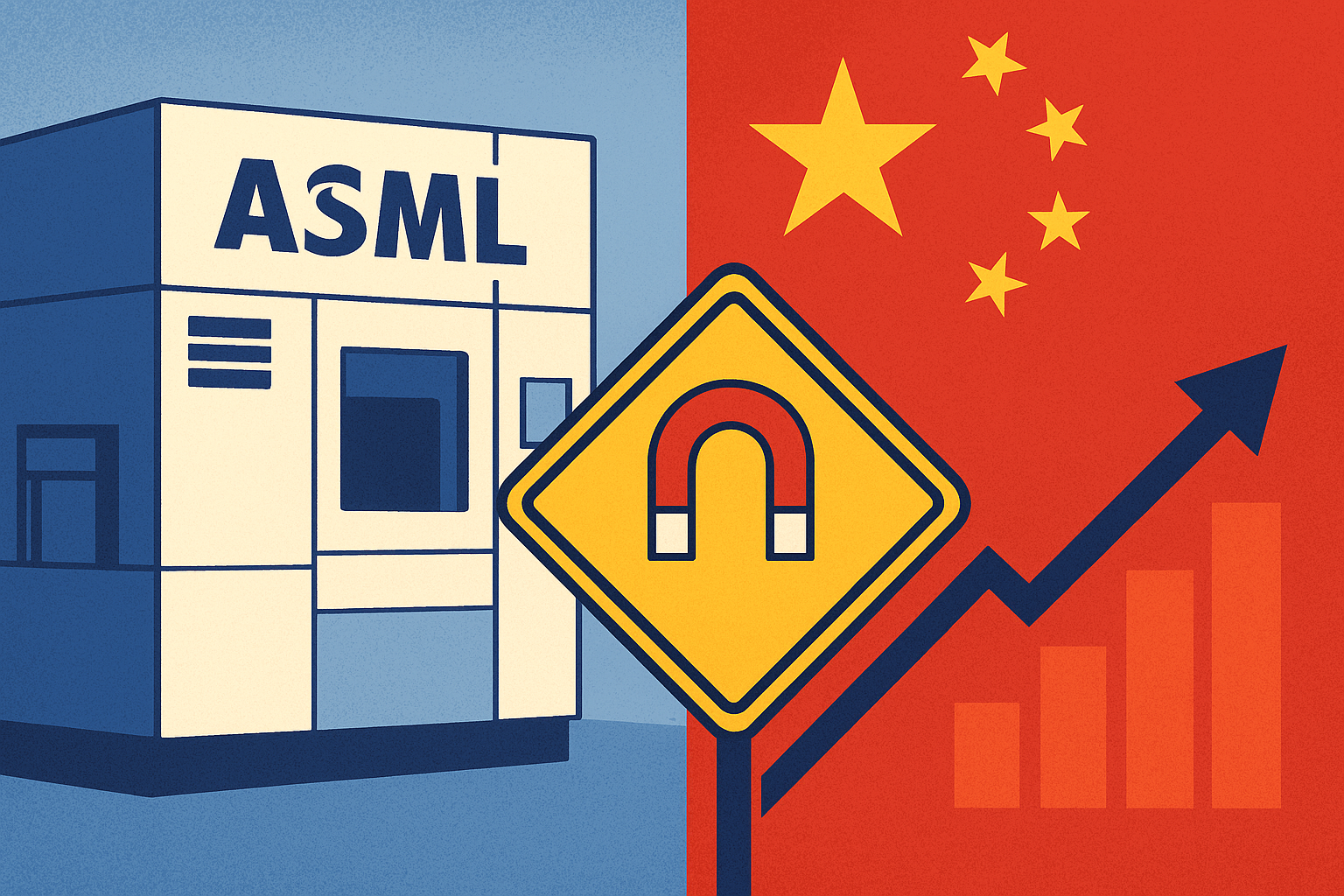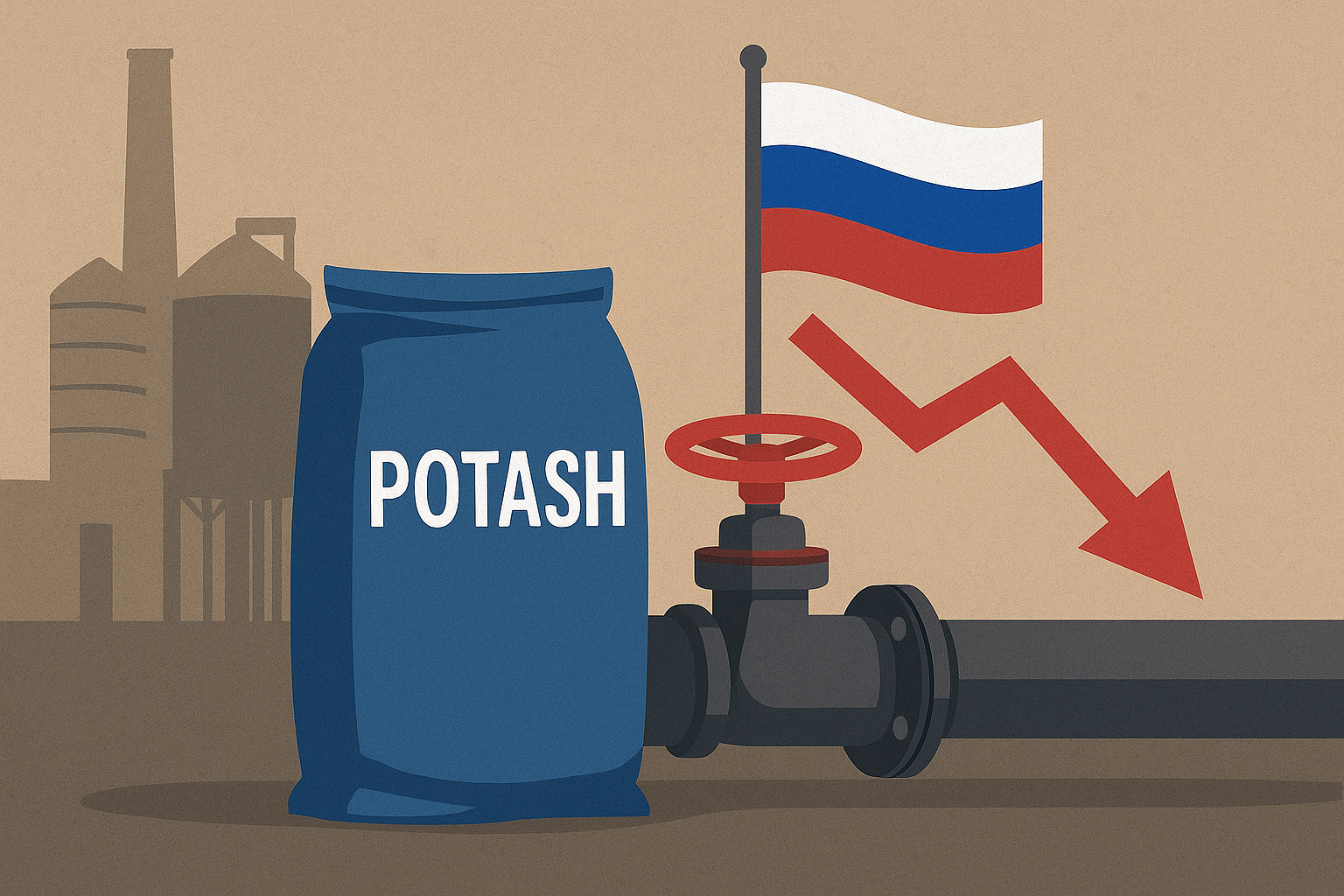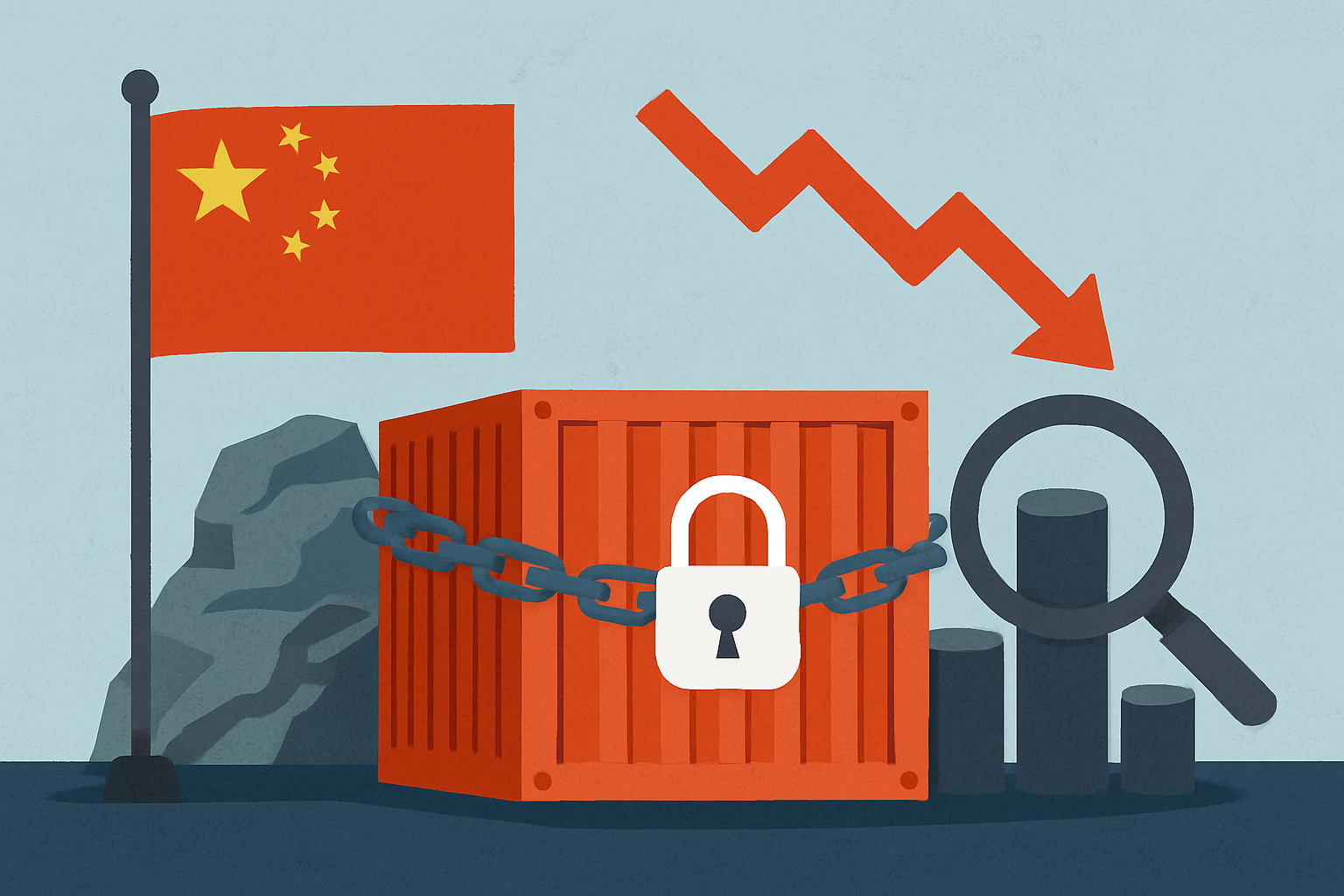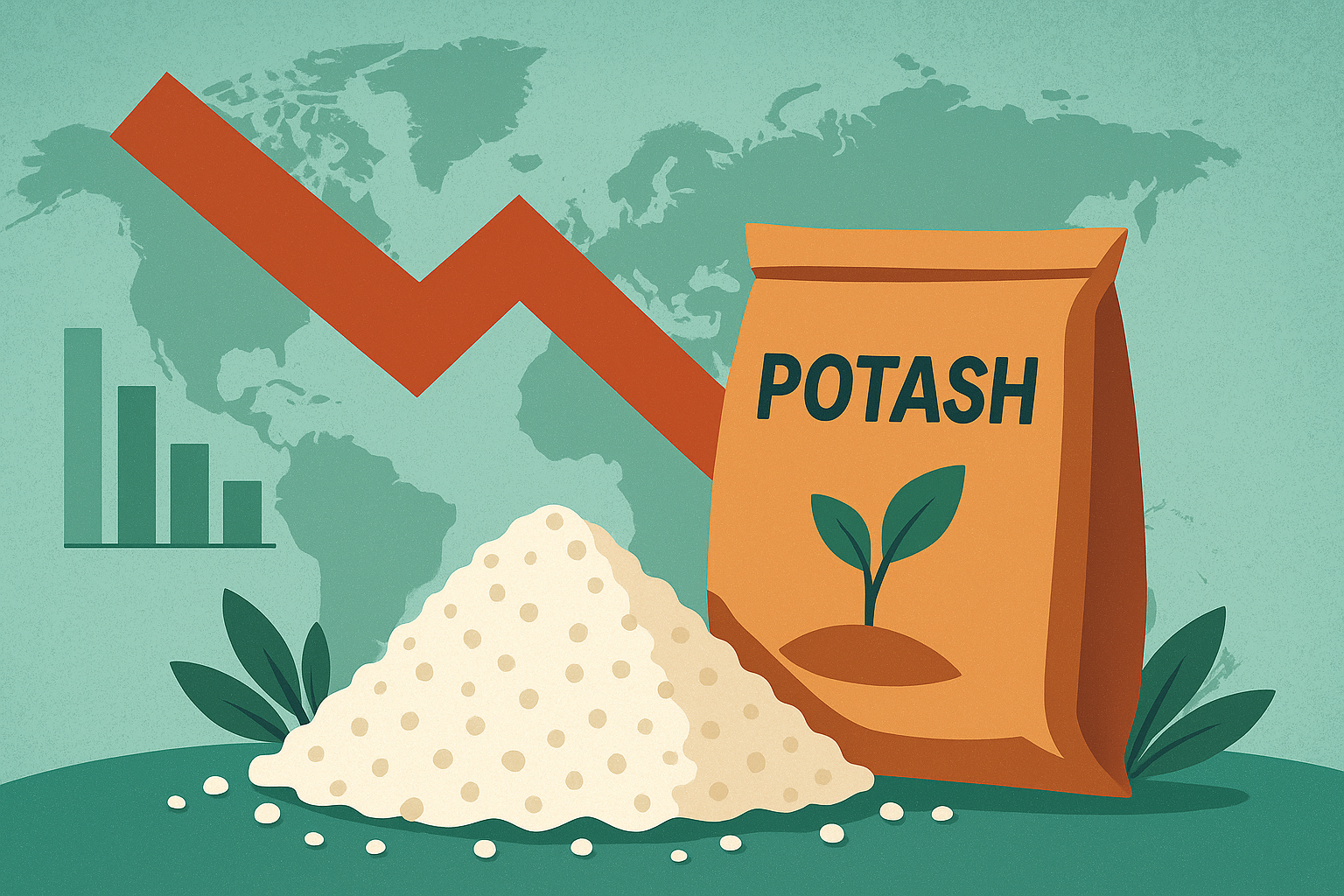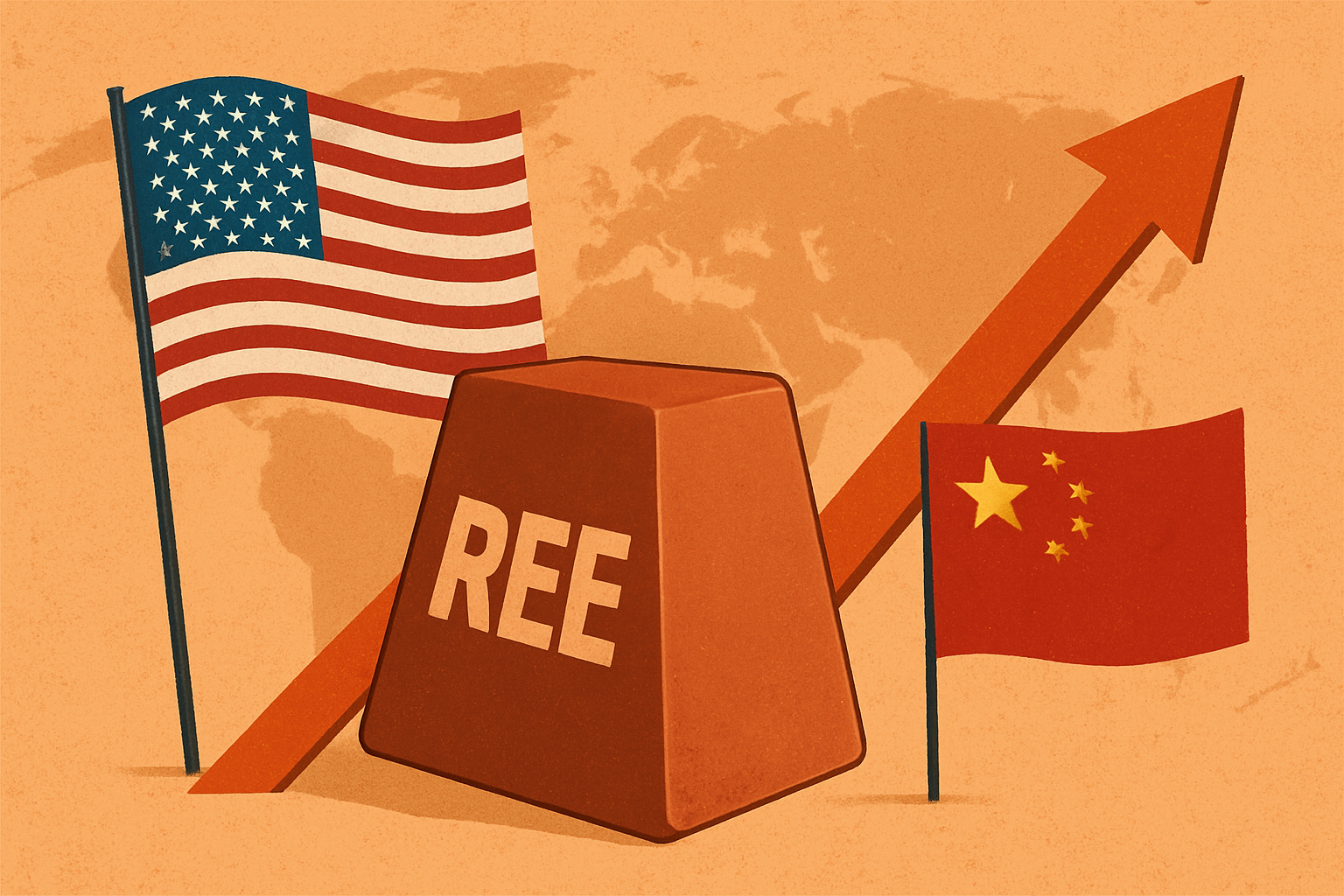As global markets digest China’s latest export restrictions on rare earth materials, one of the most critical names in advanced manufacturing, ASML Holding N.V., is sounding a cautious note. The semiconductor equipment giant insists its expected decline in China sales next year is unrelated to prior stockpiling, yet the company admits that Beijing’s widening export curbs could pose serious long-term risks for the global chip supply chain.
This development lands at a pivotal moment for investors — when geopolitical tensions, technology security, and the race for critical materials are shaping the next phase of industrial policy and market dynamics.
A Subtle Warning Beneath the Calm
In a recent statement reported by Reuters (Oct 15, 2025), ASML’s Chief Financial Officer emphasized that near-term operations remain stable thanks to sufficient inventory and alternative sourcing strategies. However, he also underscored that sustained Chinese export controls could “eventually tighten access to key materials essential for high-precision lithography systems.”
China’s export restrictions, which now encompass a wider array of rare earth elements and technologies used in semiconductor and defense industries, are the latest move in a series of trade maneuvers reflecting broader strategic competition between Washington and Beijing.
Rare earths — such as neodymium, dysprosium, and terbium — are vital for manufacturing the powerful magnets and coatings that underpin ASML’s EUV (extreme ultraviolet) lithography systems, critical for producing cutting-edge chips. Any sustained disruption to these material flows could ripple through the semiconductor ecosystem, from chipmakers like TSMC ($TSM) and Intel ($INTC) to downstream tech and defense industries.
Why This Matters for Investors
The stakes are significant. The global rare earth supply chain remains overwhelmingly concentrated — China controls roughly 60% of global production and over 85% of processing capacity, according to data from the U.S. Geological Survey (USGS) and World Bank (2024).
For investors, this concentration represents both a geopolitical vulnerability and an investment opportunity. Companies outside of China that can provide reliable rare earth supply, processing technologies, or magnet manufacturing could emerge as critical enablers in the semiconductor and defense sectors.
Meanwhile, nations like the U.S., Japan, and Australia are intensifying their critical minerals partnerships under frameworks such as the Minerals Security Partnership (MSP) to reduce dependency on Chinese exports. According to BloombergNEF, global spending on critical mineral diversification projects is projected to exceed $40 billion by 2026, much of it targeting rare earth extraction, refining, and recycling.
Strategic Responses Taking Shape
In response to mounting trade frictions, ASML and its major clients are accelerating localization strategies. The company has reportedly engaged with European suppliers and U.S.-based materials firms to secure future rare earth inputs.
Furthermore, the European Commission’s Critical Raw Materials Act (2025) has earmarked over €3 billion to expand refining and recycling capacity within the EU, a move expected to benefit companies like Neo Performance Materials ($NEO.TO) and Lynas Rare Earths ($LYC.AX) — both of which have seen rising investor interest since China’s latest policy tightening.
Analysts at McKinsey & Co. recently noted that “supply chain redundancy and dual sourcing are becoming central to semiconductor resilience strategies.” In essence, any firm capable of building or enabling those redundancies stands to gain disproportionately in the years ahead.
Future Trends to Watch
- U.S. Defense and Technology Investments — Expect further funding announcements aimed at rare earth separation and magnet projects under the U.S. Inflation Reduction Act and Defense Production Act (DPA) designations.
- EU-Japan Collaboration — The EU and Japan are preparing joint ventures on rare earth recycling and material recovery, signaling greater policy alignment on strategic autonomy.
- New Market Entrants — Juniors and mid-tier producers in Canada, Africa, and Australia may draw speculative and institutional capital as supply security takes precedence over low-cost sourcing.
Key Investment Insight
For investors, ASML’s tempered remarks are not a red flag — they’re a strategic signal. The short-term impact of China’s export curbs may be limited, but over the longer horizon, they reinforce the structural investment case for:
- Non-Chinese rare earth producers and processors.
- Technology enablers in magnet manufacturing and recycling.
- Equipment and materials firms embedded in resilient semiconductor supply chains.
In other words, the “de-risking” trend is no longer a political slogan — it’s a capital allocation thesis.
Stay Ahead of the Curve
The rare earth supply debate is shifting from speculative rhetoric to operational reality. Investors seeking to anticipate policy-driven value creation — not just react to it — should track evolving supply chain disclosures from ASML and peers, along with capital flows into alternative material ventures.
For ongoing coverage of critical minerals, rare earth developments, and sector-specific investment insights, stay connected with explorationstocks.com — your trusted source for actionable financial intelligence.

